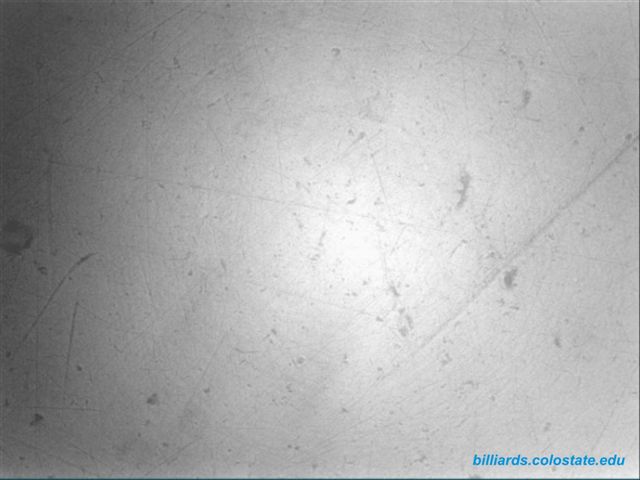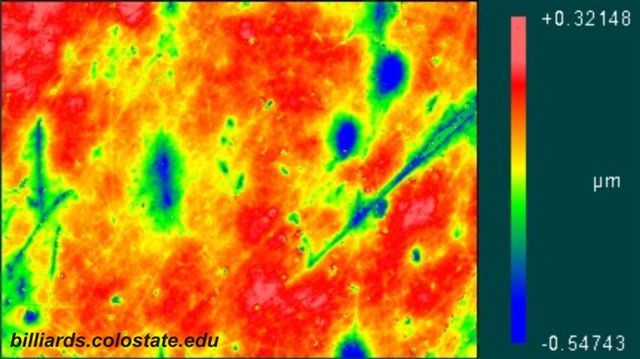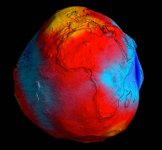I did some higher-magnification images, but they weren't as interesting and didn't come out as well.
Unfortunately, that would not work very well. Sorry.
Yes.
It was an Aramith Pro Cup ("red measles") cue ball.
I wasn't surprised because pool balls are polished at the end of the manufacturing process. Polishing is an abrasive process, creating scratches ... even for smooth surfaces (albeit less deep scratches for shinier surfaces).
I don't think the scale of the scratches and blemishes is significant enough to affect throw very much unless the ball surface is damaged (e.g., scuffed, pitted, cracked, etc.) from long-term and/or abusive use.
I have imaged a large variety of ball conditions, but you will need to wait for my BD article to see and read about them. I'll try to remember to post a link in this thread when the article is available. I probably won't write it for several months, after I finish up my current series of articles.
You're very welcome.
For people who don't like clicking on links, here are the photos from the resource page:
For additional info, see the
magnified ball surface resource page.
Regards,
Dave




